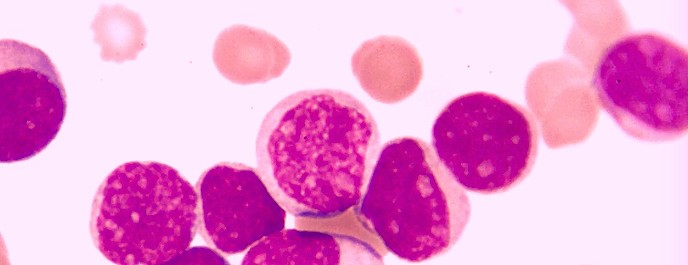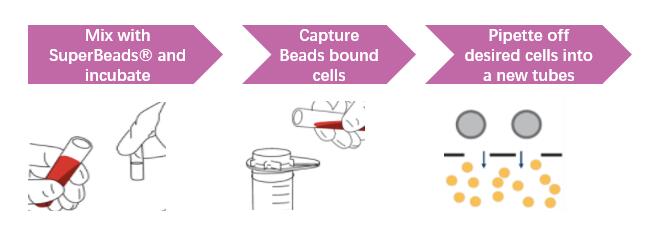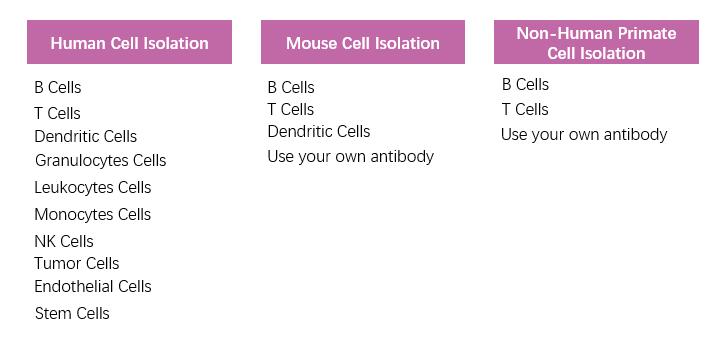Cell Isolation Kit

Technologies that isolate rare cell types to high purity are essential to the cell biology researcher. Understanding cell development pathways becomes increasingly significant as diagnosis and treatment of disease turns more to the molecular level. This diagnosis requires methods for detection, isolation, and analysis of individual cells regardless of their frequency. Starting with the right primary cells is the foundation for your research, which is the best way to ensure success in the downstream functional and biological studies in the lab.
Creative Bioarray is dedicated to delivering thoroughly tested and high-quality products that do not adversely affect cells during isolation. SuperBeads® magnetic isolation technology can be used to isolate pure, viable, and function cells of the immune system to advance your immunology research. With this technology, your cells are not exposed to the stress of passing through a dense column, so there’s no risk of artifacts caused by the isolation method.
Features of SuperBeads® Magnetic Isolation Technology:
- Fast, efficient, easy-to-use - As little as 10 minutes
- No columns required - No mechanical stress, ready for downstream applications
- Consistent high purity and yield - Achieve up to 99% cell purity with high recovery
- Large range of species
Work Flow:

Cell Isolation Products (Creative Bioarray offers):

Isolation of lymphocytes from whole blood is often required in such clinical investigations and the assay of cell-mediated immune responses. Creative Bioarray offers ready-to-use density gradient medium and PBMC Isolation Kit for purifying lymphocytes in high yield and purity from small or large volumes of peripheral blood from different species.
Description: Human CD4+ T helper cells play a central role in the adaptive immune response by providing help to ...
Description: Monocytes are found in the circulating peripheral blood where they make up 10-20% of the total ...
Description: A naïve T cell is a T cell that has differentiated in bone marrow, and successfully undergone the ...
Description: Memory B cells are a B cell sub-type that are formed within germinal centers following infection ...
Description: Innate lymphoid cells (ILCs) are a group of innate immune cells that are derived from common ...
Description: Naive CD4+ T cells are the common precursors of multiple effector and memory T cell subsets and ...
Description: CD138 / Syndecan-1, is a transmembrane, heparin sulphate proteoglycan which is made up of one core ...
Description: The CD34 protein is a member of a family of single-pass transmembrane sialomucin proteins that show ...
Description: Human B Cells are a type of white blood cell of the lymphocyte subtype. They function in the ...
Description: B-cell chronic lymphocytic leukemia (B-CLL) is the most common type of leukemia in adults. CLL ...
Description: Human T cells are regulators of the immune system. CD4+ T cells are also known as helper T cells ...
Description: Human CD8 T cells carry the CD8 protein marker and the T cell receptor (TCR), which recognizes ...
Description: Circulating tumor cells (CTCs) are cells that have shed into vasculature or lymphatics from a ...
Description: Monocytes are found in the circulating peripheral blood where they make up 10-20% of the total ...
Description: A naïve B cells is a B cell that has not been exposed to an antigen. Once exposed to an antigen, ...
Description: Human Neutrophils are the most abundant type of granulocytes and the most abundant type of white ...
Description: Human natural killer cells are a type of cytotoxic lymphocyte critical to the innate immune system. ...
Description: Granulocytes are a category of white blood cells characterized by the presence of granules in their ...